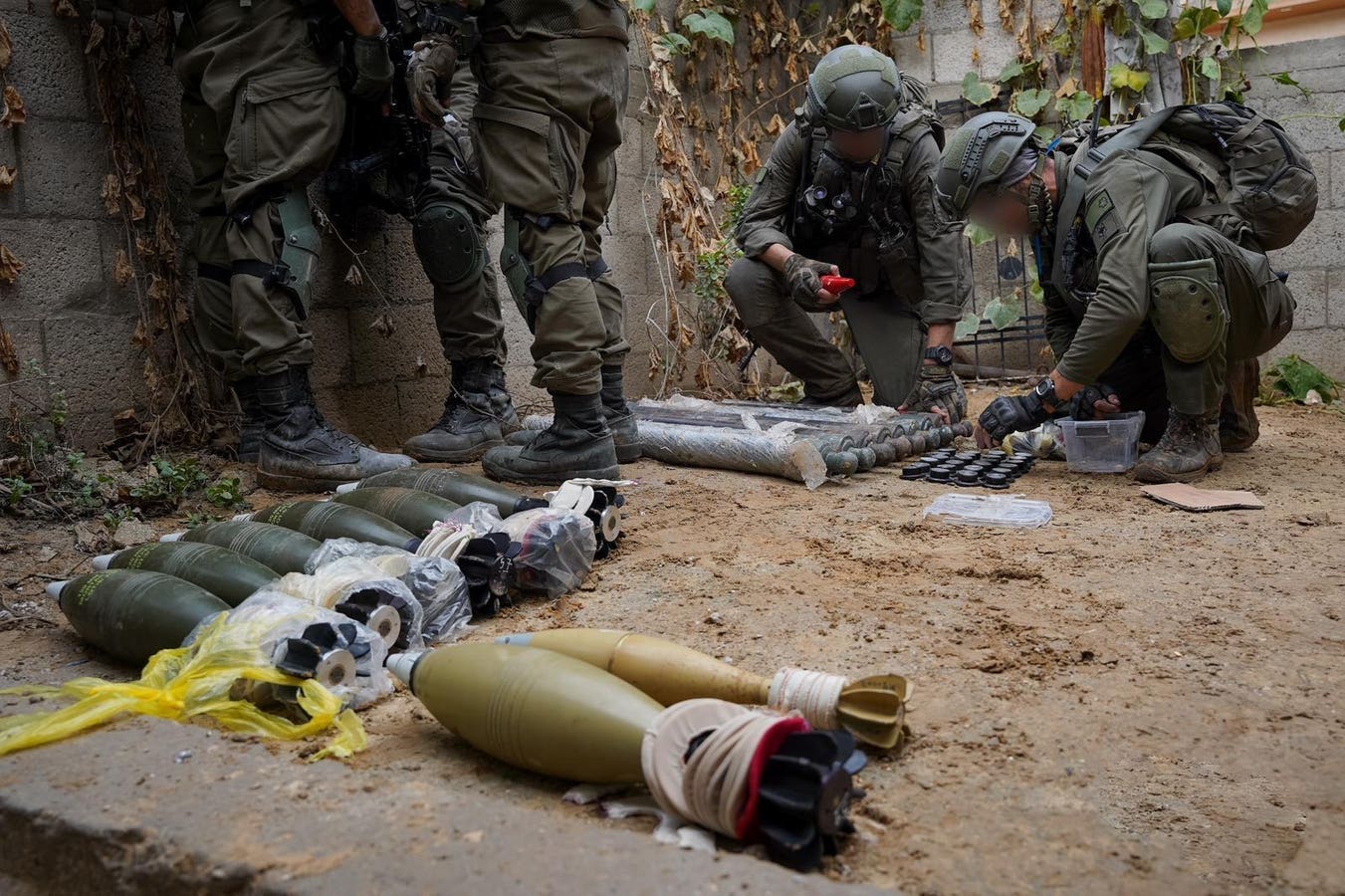As you’ve been having Christmas, the Israel Defense Force has been totting up the weapons and intelligence it has gathered in Gaza.
Reports from Gaza are hard to gauge from thousands of miles away and it’s important to acknowledge that most of our information about details of the conflict comes from one side – Israel.
But in their efforts to give their own narrative of the war in Gaza, the Israel Defense Force and Israeli intelligence have released a trove of information worth considering over the past three months.
Among the latest came in a briefing given by IDF Spokesperson, Rear Admiral Daniel Hagari, during Christmas weekend. In it he explained that Israeli forces – soldiers of the 98th Division and of the Givati Brigade – expanded ground operations in the southern and northern parts of the Gaza Strip over the Holiday, particularly in the southern Gazan city of Khan Younis.
The 98th Division he added, “will see a further expansion of its capabilities in the upcoming days,” possibly indicating a plus-up in its numbers or the addition of new equipment and/or units to prosecute efforts to destroy Hamas tunnels under the City and drive Hamas terrorists from them.
As he elaborated on recent operations, Hagari stated that Israeli forces have destroyed and seized approximately 30,000 explosive devices, including anti-tank missiles and rockets that were in Hamas’ possession within the Gaza Strip.
That is a remarkable number of projectiles and explosives concentrated within what was putatively a conventional civil society in the 25 mile-long, 3.7 to 7.5 mile-wide Gaza Strip. As remarkable is the likely possibility that tens-of-thousands more such weapons remain to be discovered in Gaza. If the IDF’s claim is true, it is also noteworthy that it did not include small arms and ammunition as well other weapons.
While Admiral Hagari was giving these and other briefings, The Times of Israel relayed news from Keshet 12 (a leading Israeli TV channel) highlighting intelligence gained by the IDF Military Intelligence Directorate’s Unit 504 in the course of 50,066 phone calls it has made with Palestinians in Gaza.
The effort has largely been made to urge Palestinians to evacuate to southern Gaza or go to Israeli and U.N. designated shelters and humanitarian zones, during the last two-plus months of the conflict. Israel’s ability to control the overwhelmingly cellular phone and internet communications in the Gaza Strip has made the warning calls possible as well as what Keshet 12 reported to be approximately 12 million voice messages and 14 million text messages.
But there has been another dimension to the humanitarian intent behind the messaging. According to the TV network, Unit 504 has recorded numerous phone calls with Palestinians inside the Gaza Strip.
The conversations have yielded reports of Hamas preventing Gaza citizens from fleeing south to safe zones during the fighting, residents’ expressions of dismay at Hamas’ grip on the territory and disapproval of Hamas’ October 7 attacks.
The Times cited audio from phone calls aired on Keshet 12 including one in which a Palestinian in Gaza was asked by a Unit 504 caller whether he had seen any Hamas gunmen. The Palestinian replied in the negative and then bemoaned, “The problem is that we’re dying, and they’re saving themselves, [even though] we haven’t even seen their faces.”
As the newspaper pointed out, the number of calls in which Palestinians might be heard criticizing Hamas was likely small. Unit 504 officers acknowledged that those speaking out against Hamas might be outliers but Israeli intelligence was deriving useful information from what conversations it has had.
There have also apparently been unsolicited calls from Gazans seeking to share information with Unit 504 including from a Palestinian who managed to emigrate to Europe.
“Many others want something in return, but this man did it because he just hates Hamas,” a [Unit 504] officer said on Keshet 12. “From this, you understand that something has changed over there.”
Claims of Hamas interception and theft of humanitarian aid were also made in phone conversations, some charging that the United Nations Relief and Works Agency for Palestine Refugees in the Near East (UNRWA) abetted the terrorists. These charges have not been verified and it is notable that the government of Israel has not yet formally repeated them.
But Unit 504 operatives reportedly told Keshet 12 that they have had direct calls with Hamas members. The intelligence officers there observed that some information sharing was driven by a desire by some in Hamas to quash rivals within the terror group. Others, feeling that Hamas is losing, may hope to receive assistance fleeing Gaza.
According to a Unit 504 officer, the intel thus gathered has yielded the location of various Hamas forces, ambushes, tunnel shafts, and boobytrapped homes. Not surprisingly, he said the information that is passed along to ground units or to the Israeli Air Force.
Other nuggets from the phone calls reportedly came from informants still in Gaza who the Keshet 12 report asserted agreed to provide 360-degree footage of key roads in Gaza, passing it along to Unit 504. That footage the Unit said, has been used by Israeli grounds troops to train via virtual reality headsets.
Even if the calls are marginally effective as a source of intelligence, any strands that contribute are worthwhile from an Israeli perspective. Along with listening clandestinely to Hamas, interrogating terrorists who surrender and using other technological means of intelligence gathering, the cold-calling may help find another several thousand Hamas weapons.
Read the full article here





